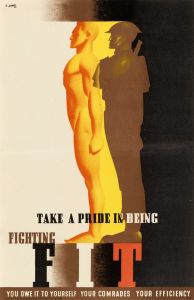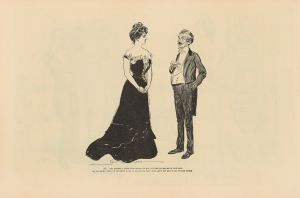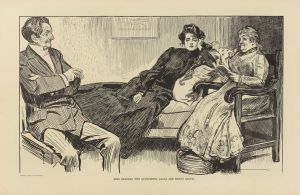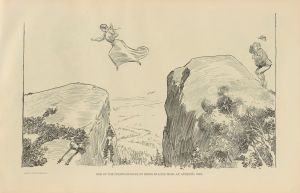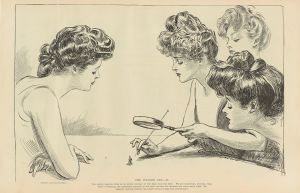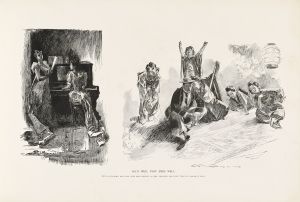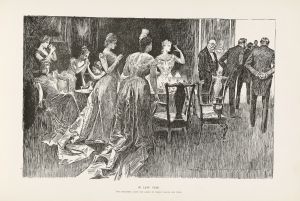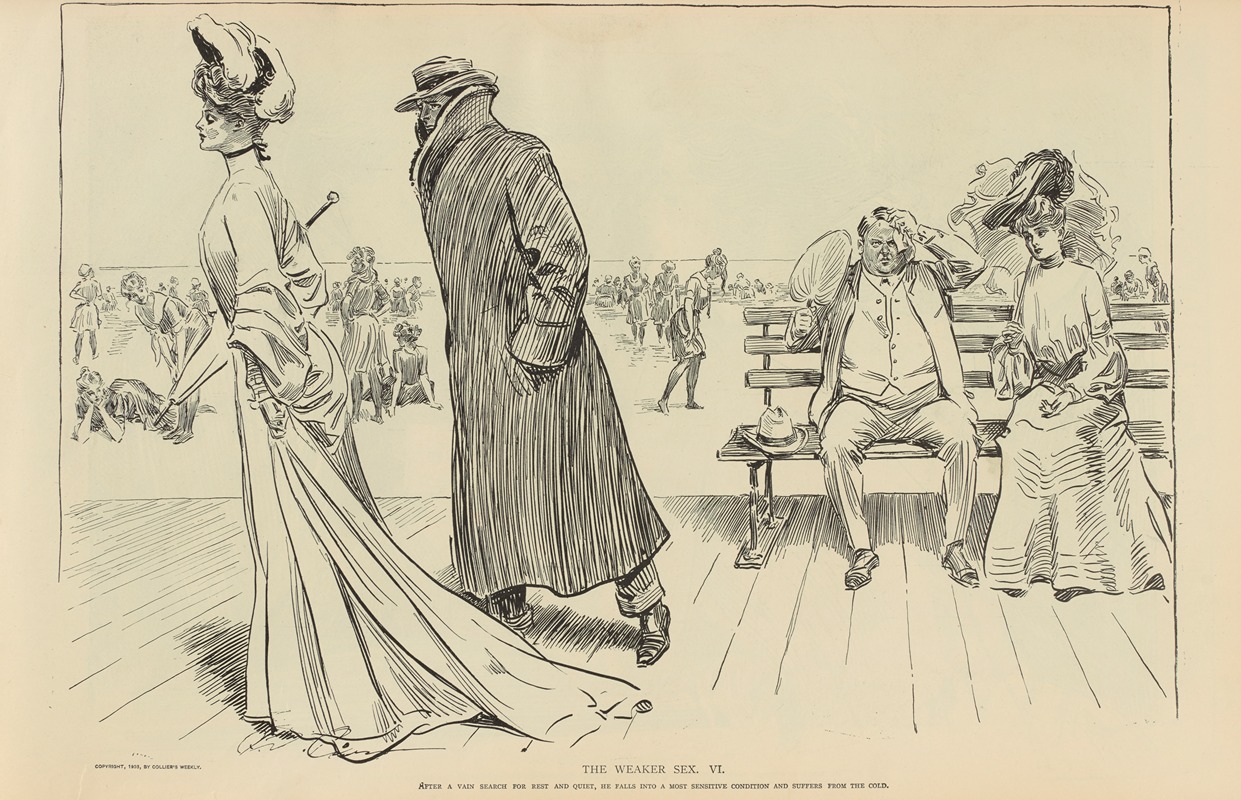
The weaker sex.—VI
A hand-painted replica of Charles Dana Gibson’s masterpiece The weaker sex.—VI, meticulously crafted by professional artists to capture the true essence of the original. Each piece is created with museum-quality canvas and rare mineral pigments, carefully painted by experienced artists with delicate brushstrokes and rich, layered colors to perfectly recreate the texture of the original artwork. Unlike machine-printed reproductions, this hand-painted version brings the painting to life, infused with the artist’s emotions and skill in every stroke. Whether for personal collection or home decoration, it instantly elevates the artistic atmosphere of any space.
"The Weaker Sex.—VI" is an illustration by the renowned American artist Charles Dana Gibson, who is best known for creating the iconic "Gibson Girl" images that epitomized the idealized American woman at the turn of the 20th century. Gibson's work was widely published in magazines such as Life, Collier's, and Harper's, and his illustrations played a significant role in shaping the visual culture of the era.
Charles Dana Gibson was born on September 14, 1867, in Roxbury, Massachusetts. He studied at the Art Students League in New York City, where he honed his skills in pen-and-ink drawing. Gibson's career took off in the 1890s, and he became one of the most celebrated illustrators of his time. His "Gibson Girl" series, which debuted in the 1890s, captured the spirit of the Progressive Era and became a symbol of the new, independent woman.
"The Weaker Sex.—VI" is part of a series of illustrations that humorously explore the dynamics between men and women. The title itself is a play on the traditional notion of women as the "weaker sex," a stereotype that Gibson often challenged through his art. His illustrations frequently depicted women in positions of strength, intelligence, and influence, subtly critiquing societal norms and expectations.
In "The Weaker Sex.—VI," Gibson employs his signature style, characterized by detailed line work and expressive figures. The illustration typically features a scene where the roles of men and women are humorously reversed or exaggerated, highlighting the absurdity of gender stereotypes. This approach was both entertaining and thought-provoking for contemporary audiences, who were beginning to question traditional gender roles during a time of social change.
Gibson's work, including "The Weaker Sex.—VI," was influential in the early feminist movement, as it presented women as confident and capable individuals. The "Gibson Girl" became a cultural icon, representing a blend of beauty, elegance, and independence. This image resonated with many women who were advocating for greater rights and opportunities, including the right to vote, which was achieved with the passage of the 19th Amendment in 1920.
While specific details about "The Weaker Sex.—VI" may not be as widely documented as some of Gibson's other works, it remains an important part of his oeuvre. The illustration reflects Gibson's ability to capture the zeitgeist of his time and his talent for using humor and satire to address social issues. His legacy endures in the world of illustration and beyond, as his work continues to be studied and appreciated for its artistic merit and cultural significance.
Overall, Charles Dana Gibson's "The Weaker Sex.—VI" is a testament to the power of art to challenge societal norms and inspire change. Through his clever and insightful illustrations, Gibson left an indelible mark on American culture, influencing perceptions of gender and the role of women in society.





